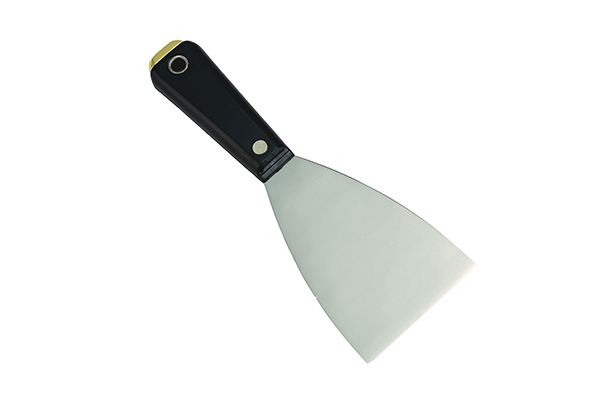When it comes to painting, drywall work, or general home repairs, a putty knife is a must-have tool. But if you’ve ever shopped for one, you’ve probably noticed that putty knives come in two main types: stiff and flexible. So which is better—stiff or flexible? The answer depends on the task at hand. Each type has its strengths and specific uses, and understanding the differences can help you choose the right tool for your next project.

Understanding Putty Knives
A putty knife is a flat-bladed tool used for spreading materials like spackle, joint compound, wood filler, and putty. While the blade shape may be similar across the board, the flexibility of the blade determines how it performs in different tasks.
-
Stiff putty knives have rigid blades that do not bend much under pressure. They’re usually made from thicker stainless steel and are designed for tougher jobs.
-
Flexible putty knives have thinner, more pliable blades that easily conform to surfaces, allowing for smoother and more even spreading.
When to Use a Stiff Putty Knife
A stiff putty knife is ideal for heavy-duty jobs where force and control are necessary. Some common applications include:
-
Scraping old paint or wallpaper: A stiff blade gives you the leverage needed to pry off stubborn material.
-
Removing hardened putty or glue: The rigidity of the blade allows for more pressure to be applied without bending.
-
Tapping into tight corners or edges: Stiff blades maintain their shape and help you work more precisely when tackling tough spots.
-
Filling deep holes or large cracks: When you need to press filler into a deeper area, a stiff blade allows for a firmer push.
Stiff putty knives also tend to be more durable and long-lasting, especially when used on rough surfaces like concrete or wood.
When to Use a Flexible Putty Knife
Flexible putty knives shine in finishing work and projects that require a delicate touch. Their best uses include:
-
Spreading thin layers of compound: If you’re skimming or smoothing a wall, a flexible blade glides effortlessly across the surface, leaving a clean, uniform finish.
-
Applying spackle to small nail holes or cracks: Flexibility allows for gentle pressure and a more forgiving application, reducing the chances of gouging the surface.
-
Smoothing out tape seams in drywall projects: Flexible blades conform better to surface variations, helping create seamless joints.
Flexible knives are usually preferred for cosmetic work, especially where a flawless surface is the goal. They allow better control and smoother feathering of material edges.
Material Matters
The material of the blade also plays a role in how stiff or flexible a putty knife is. Stainless steel is commonly used for both types, but plastic putty knives—often disposable—are generally more flexible and best suited for lightweight work. Professional-grade tools may use tempered steel for increased strength and longevity.
Which One is Better?
The truth is, neither type is universally better. It depends entirely on what you’re doing. For heavy-duty scraping or deep filler applications, a stiff putty knife is the better choice. For smooth finishes, light applications, or precision work, a flexible putty knife is more effective.
Most professionals and serious DIYers keep both types in their toolkits. Using the right knife for each stage of a project ensures better results and saves time.
Conclusion
Choosing between a stiff or flexible putty knife isn’t about which one is superior—it’s about matching the tool to the task. Stiff blades offer strength and precision for tougher jobs, while flexible blades provide finesse and smooth application for finishing touches. For anyone tackling regular maintenance or renovation work, investing in both types will give you the versatility needed to handle nearly any project with confidence.
Post time: May-29-2025






